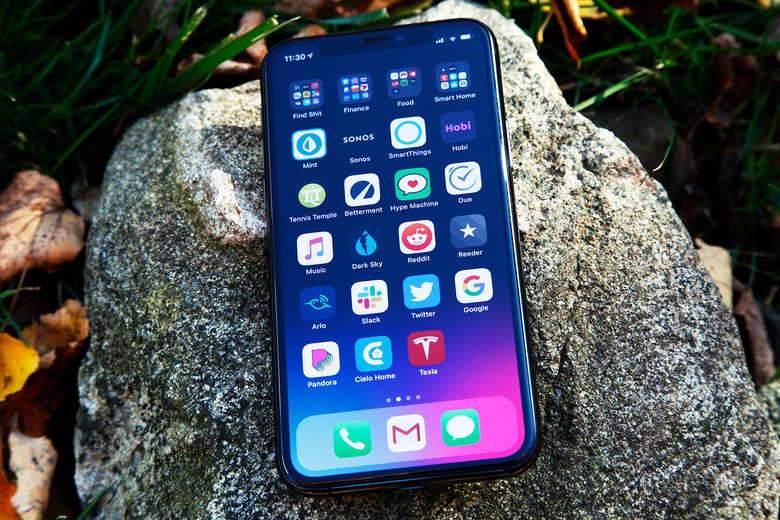This Brilliant Hidden iPhone Feature Shows One Of iOS's Biggest Advantages Over Android
Younger smartphone fans might not have even been using a cell phone long enough to realize this, but there actually was a time in the smartphone industry before Apple's iOS platform and Google's Android platform dominated the industry. In fact, neither smartphone operating system has quite the stronghold on the global smartphone market that the Symbian OS had. Platforms like Symbian, Windows Mobile, and even earlier versions of the BlackBerry operating system dominated the industry — yes, seriously, there was a point in time when BlackBerry had a decent share of the market. Those days are long gone, however, because the iPhone and Android completely turned the industry on its head.
There are a number of reasons that iOS and Android were able to not just dominate earlier smartphone platforms, these new mobile OSes completely destroyed them. In fact, Apple and Google are so dominant that they didn't just kill Windows Mobile, they also killed Windows Phone, the platform that Microsoft created to replace Windows Mobile. Among all the reasons Android and the iPhone were able to eliminate the competition, one really stands out to us: these new platforms stopped trying to tell people what to do with smartphones and started letting people do what they wanted to do with smartphones. And what's most interesting, perhaps, is the fact that they accomplished this feat in very different ways.
This is a big topic that we have discussed a number of times here on the site, but smartphone platforms like Symbian and Windows Mobile were convoluted messes. Even the simplest of functions was so horribly complicated, and the core apps that came installed on a phone were pretty much the only apps people used. That's right — until Apple created the App Store in 2008, there wasn't really anything like an on-device app portal. If you wanted to install a third-party app on your phone, you had to find it online on your computer, download it, and then sync it across to your phone. It was ridiculous in hindsight, but it was the only option people had if they wanted to expand the capabilities of their smartphones.
That's where iOS and Android get things. These platforms don't merely dump a pile of convoluted apps into a user's lap, they offer a simple suite of apps that take care of core functionality, and then they open the doors to an endless amount of added features thanks to their respective app stores. That's the foundation on which both platforms were built, but from there they diverge dramatically.
Apple's iOS platform is very controlled, which has upsides and downsides compared to Google's open approach with Android. On the one hand, it gives users much less freedom. But on the other, it has allowed Apple to focus on things that have seemingly been an afterthought with Android... like security and privacy. The early days of Android were like the wild west, and although Google has had to rein things in as a result of outside pressure, privacy and security seemingly remain an afterthought with Google. With the iPhone, however, privacy and security remain at the forefront and a nifty hidden feature we came across over the weekend serves as a great reminder.
In a thread over on Reddit in the iPhone sub, a user shared news of a nifty feature that he discovered on his iPhone. It's so simple, but so telling of Apple's approach to privacy and security. Here's what happens when you take a screenshot of any page within the iPhone's list of stored passwords:

The user name was obviously obscured manually, but look at the password field. It's completely blank, and yet if you look at it in the app, you'll see the password visible in plain text. Why does it automatically disappear when you snap a screenshot? Because it's brilliant, that's why. People share photos all the time and upload their pictures to all sorts of third-party services. For example, we use Google Photos to back up iPhone photos for free. That screenshot a user might've wanted to capture for quick access can do all sorts of damage if left in the iPhone's camera roll, so Apple wisely obscures the password. It might take a few extra taps the next time the user wants to access his or her login info, but it's more than worth it to avoid the aggravation of potentially recovering a stolen account.
Update: Several readers have pointed out that a similar feature is available in recent versions of Android to obscure passwords saved in the Chrome browser. It's not quite the same as Apple's implementation, but we apologize for the omission nevertheless.
